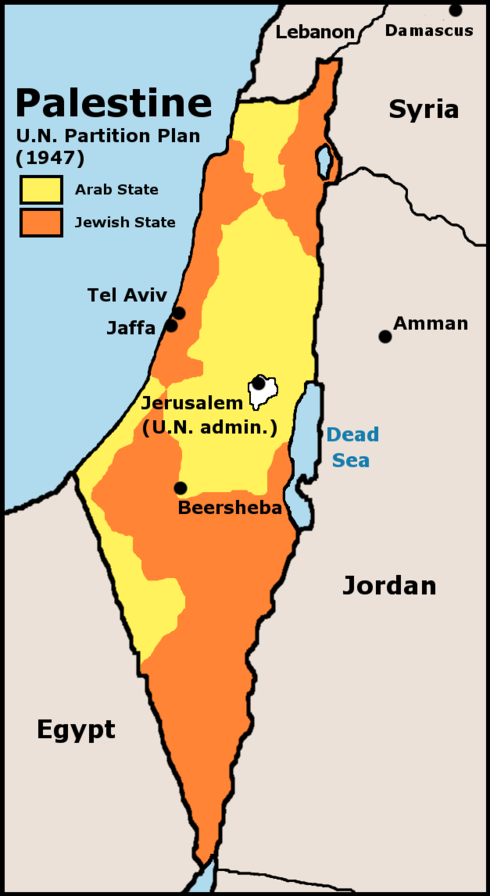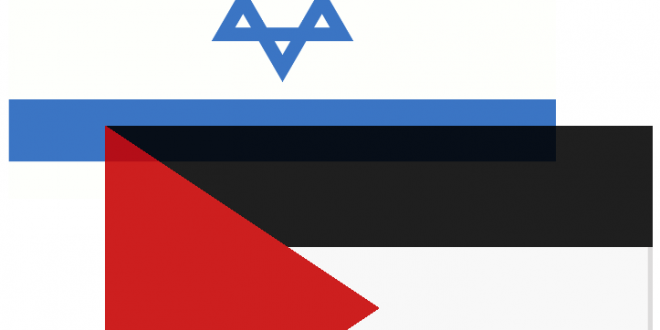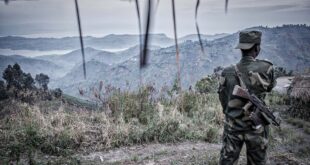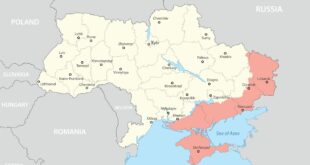November 2 marks the centenary of the Balfour Declaration of 1917, which began the still-ongoing colonisation of Palestine and sowed the seeds of an endless nightmare for the Palestinian people. The UK Government needs to make amends for its crimes against the Holy Land. Campaigners are calling on it to apologise.
*****
In 1937 the Peel Commission declared that British promises to Arabs and Zionists were irreconcilable and unworkable. Too late, Britain dropped its commitment to the Zionists and began talking about a Palestinian state with a guaranteed Arab majority and protection for minorities.
The Zionists reacted furiously. Their underground military wing, the Haganah, and other armed groups, unleashed a reign of terror in the run-up to World War II. They continued their attacks on the British after the war and tried to bring in hundreds of thousands of Jewish refugees.
In 1946 they blew up the south wing of the King David Hotel in Jerusalem, which housed the British mandatory government, killing 91. This terrorist act was ordered by David Ben-Gurion in retaliation for the arrest of Haganah, Irgun and Stern Gang members suspected of attacks on the British. He then thought better of it and cancelled the operation but Menachem Begin, who led the Irgun, went ahead. Both Ben-Gurion and Begin, who had a big price on his head as a wanted terrorist, became Israeli prime ministers.
Throughout this period the United States were reluctant to allow Jews fleeing Europe to enter the empty spaces of North America, preferring to play the Zionist game and see them funneled into Palestine. In 1945 the new US president, Harry Truman, offered Arabs this excuse: “I am sorry, gentlemen, but I have to answer to hundreds of thousands of those who are anxious for the success of Zionism; I do not have hundreds of thousands of Arabs among my constituents.”
However, Truman was frequently exasperated by the Zionist lobby and on one occasion had a delegation thrown out of the White House for their table-thumping antics. He wrote: “I fear very much that the Jews are like all underdogs. When they get on top they are just as intolerant and cruel as the people were to them when they were underneath.”
American author Gore Vidal provided an intriguing insight:
Sometime in the late 1950s, that world-class gossip and occasional historian, John F. Kennedy, told me how, in 1948, Harry S. Truman had been pretty much abandoned by everyone when he came to run for president. Then an American Zionist brought him two million dollars in cash, in a suitcase, aboard his whistle-stop campaign train. ‘That’s why our recognition of Israel was rushed through so fast.’ As neither Jack nor I was an antisemite (unlike his father and my grandfather) we took this to be just another funny story about Truman and the serene corruption of American politics.
By now this monster that Britain had breathed life into was running out of control. The Arabs, tricked and dispossessed, were outraged. The collision has been fatally damaging to the West’s relationship with Islam ever since. As the violence escalated, Gandhi was moved to comment:
Palestine belongs to the Arabs in the same sense that England belongs to the English. They (the Jews) have erred grievously in seeking to impose themselves on Palestine with the aid of America and Britain and now with the aid of naked terrorism.
With the mandate about to expire in 1948 an exhausted Britain handed over the problem to the United Nations and prepared to quit the Holy Land, leaving a powder-keg with the fuse fizzing. The newly-formed UN thought it would save the situation by partitioning Palestine into Arab and Jewish states and making Jerusalem an international city. But this gave the Jews 55 percent of Palestine when they accounted for only 30 percent of the population. The Arab League and the Palestinians, of course, rejected it.

Under the UN Partition Plan the Jews received 55% of the country (including both Tel Aviv/Jaffa and Haifa port cities, the Sea of Galilee and the resource-rich Negev) although they accounted for only a third of the population (548,000 out of 1,750,000) and owned only 6% of the land. The Jewish community accepted the Partition Plan; the Palestinians (except those in the Communist Party) and the Arab countries rejected it.
The UN Partition of Palestine never did stand close scrutiny. At that time, as some commentators have pointed out, UN members did not include African states, and most Arab and Asian states were still under colonialist regimes. The UN was pretty much a white colonialist club. The Palestinians themselves had no representation and they weren’t even consulted.
The first vote failed to reach the required two-thirds majority: 25 for partition, 13 against and 19 abstentions. To ensure success in the second vote a good deal of arm-twisting was applied to the smaller countries, but again it fell short. At the third attempt France was persuaded to come “on board” after the US threatened to withdraw desperately needed post-WW2 aid, and on November 29 the UN voted to partition Palestine into three parts: a Jewish state on 14,000 sq km with some 558,000 Jews and 405,000 Palestinian Arabs; and an Arab state on 11,500 sq km with about 804,000 Palestinian Arabs and 10,000 Jews. Jerusalem, including major religious sites, would be a ‘corpus separatum’, internationally administered.
By the end of the 1948 war Israel controlled 78% of the country, including half the territory that had been allocated by the UN to the Palestinians. Around 750,000 Palestinians living in what became Israel were made refugees: only 100,000 remained in their homes. More than 418 villages (two-thirds of the villages of Palestine) were systematically destroyed by Israel after their residents had left or been driven out. The Arab areas were now reduced to 22% of the country, the West Bank was taken by Jordan and Gaza by Egypt. The 1949 Armistice Line (the “Green Line”) remains the de facto boundary of the State of Israel until today. Since 1988, when the Palestinians recognized Israel within that boundary, it has been the basis of the two-state option.
This ludicrous carve-up was quickly followed by shameful incidents at Deir Yassin, Lod and Ramle. Hundreds of thousands of Palestinian Arabs were uprooted from their homes and lands and to this day are denied the right to return. They received no compensation, and after their expulsion Jewish militia obliterated hundreds of Arab villages and towns. No sooner had Britain packed her bags than Israel declared statehood on 14 May 1948 and immediately set about expanding control across all of Palestine.
The following day, 15 May, is remembered by Palestinians as the Day of al-Nakba (the Catastrophe), which saw the start of a military terror campaign that forced three-quarters of a million Palestinians from their homeland to make room for the new Jewish state. Some 34 massacres were allegedly committed in pursuit of Israel’s territorial ambitions.
An event permanently etched on the Palestinian memory is the massacre at Deir Yassin by Zionist terror groups, the Irgun and the Stern Gang. On an April morning in 1948 130 of their commandos carried out a dawn raid on this small Arab town with a population of 750, to the west of Jerusalem. The attack was initially beaten off, and only when a crack unit of the Haganah arrived with mortars were the Arab townsmen overwhelmed. The Irgun and the Stern Gang, smarting from the embarrassment of having to summon help, embarked on a ‘clean-up’ operation in which they systematically murdered and executed at least 100 residents – mostly women, children and old people. The Irgun afterwards exaggerated the number, quoting 254, to frighten other Arab towns and villages. The Haganah played down their part in the raid and afterwards said the massacre “disgraced the cause of Jewish fighters and dishonoured Jewish arms and the Jewish flag”.
Deir Yassin signaled the ominous beginning of a deliberate programme by Israel to depopulate Arab towns and villages – and destroy churches and mosques – to make room for incoming Holocaust survivors and other Jews. In any language it was an exercise in ethnic cleansing, the knock-on effects of which have created an estimated 4 million Palestinian refugees today.
By 1949 the Zionists had seized nearly 80 percent of Palestine, provoking the resistance backlash they so bitterly complain about today. Many Jews condemn the Zionist policy and are ashamed of what has been done in their name.
UN Resolution 194 had called on Israel to let the Palestinians back onto their land. It has been re-passed many times, but Israel is still in breach. The Israelis also stand accused of violating Article 42 of the Geneva Convention by moving settlers into the Palestinian territories it occupies, and of riding roughshod over international law with their occupation of the Gaza Strip and West Bank.
But expulsion and transfer were always a key part of the Zionist plan. According to
historian Benny Morris no mainstream Zionist leader was able to conceive of future co-existence without a clear physical separation between the two peoples. David Ben-Gurion, Israel’s first prime minister, is reported to have said: “With compulsory transfer we have a vast area (for settlement)…I support compulsory transfer. I don’t see anything immoral in it.”
He showed astonishing candour on another occasion when he remarked: “If I were an Arab leader I would never make terms with Israel. We have taken their country. Sure, God promised it to us, but what does that matter to them? Our God is not theirs. We come from Israel, it is true, but 2,000 years ago, and what is that to them? There has been anti- Semitism, the Nazis, Hitler, Auschwitz, but was that their fault? They only see one thing: we have come here and stolen their country.”
General Moshe Dayan, hero of the Six Day War (1967), made it known to Palestinians in the territories that “you shall continue to live like dogs, and whoever wishes, may leave, and we shall see where this process will lead.” That appears to have been the general attitude ever since.
In 1967 Israel perceived a number of Arab threats designed to check Zionist ambitions, including a blockade of their Red Sea port. In a series of pre-emptive strikes against Egypt, Syria, Jordan and Iraq, Israel succeeded in doubling the area of land under its control.
Indeed, in the wake of the 1967 Six Day War Israel confiscated over 52 percent of
the land in the West Bank and 30 percent of the Gaza Strip, violating both international law and the UN Charter, which says that a country cannot lawfully make territorial gains from war. It was reported that Israel demolished 1,338 Palestinian homes in the West Bank and detained some 300,000 Palestinians without trial.
The UN issued Security Council Resolution 242, stressing “the inadmissibility of the acquisition of territory by war” and calling for “withdrawal of Israeli armed forces from territories occupied in the recent conflict”. It was largely ignored, thus guaranteeing further discord in the region.
Israel’s most notorious prime minister, Ariel Sharon, made a name for himself in 1953 when his secret death squad, Unit 101, dynamited homes and massacred 69 Palestinian civilians – half of them women and children – at Qibya in the West Bank. His troops later destroyed 2,000 homes in the Gaza Strip, uprooting 12,000 people and deporting hundreds of young Palestinians to Jordan and Lebanon.
Then in 1982 he masterminded Israel’s invasion of Lebanon, which resulted in a
massive death toll of Palestinians and Lebanese, a large proportion being children. An Israeli tribunal found him indirectly responsible for the massacre of Palestinians in the Sabra and Chatila refugee camps and removed him from office. But he didn’t stay in the background for long.
By the end of 1967 there were just 3 illegal Jewish settlements in the West Bank and Jerusalem. By the end of 2005 the total was 177. “When we have settled the land,” the then chief of staff of the Israeli Defence Force, Rafael Eitan, remarked in 1983, “all the Arabs will be able to do about it will be to scurry around like drugged cockroaches in a bottle.”
By 2015 there were 196 illegal Israeli settlements in addition to 232 settler outposts in the West Bank and East Jerusalem, according to the Applied Research Institute – Jerusalem, and upwards of 750,000 settlers residing there.
Apartheid and occupation: “in practice there is little difference”
So what sort of person was responsible for this misery and mayhem in the Holy Land – the “running sore” Lord Sydenham predicted? At Cambridge Arthur Balfour read moral sciences (no, seriously!). Much good it did the poor Palestinian Arabs he helped dispossess.
Described as born lazy, aloof and having an attitude problem, he was convinced of his personal superiority and wished to keep the vulgar world at arm’s length. Balfour famously remarked: “Nothing matters very much, and few things matter at all.”
He had been Prime Minister (1902-1905) and was regarded as weak. At the time of the Declaration blunder he was Foreign Secretary. In the words of one commentator Balfour’s career “stretches before our eyes in a flat and uneventful plain of successful but inglorious and ineffective self-seeking”. He was said to be a man who would make almost any sacrifice to remain in office. In this case, he sacrificed the Arab homeland. In 1922 the League of Nations put Palestine under British mandate, which incorporated the principles of the Balfour’s Declaration.
How have things turned out?
John Dugard, a professor of international law and former Special Rapporteur to the UN Human Rights Council on the situation in the Occupied Palestinian Territory, explained on Al Jazeera the differences and similarities between apartheid South Africa and apartheid Israel.
Of course, the regimes of apartheid and occupation are different. Apartheid South Africa was a state that practised discrimination against its own people. It sought to fragment the country into white South Africa and black Bantustans. Its security laws were used to brutally suppress opposition to apartheid. Israel, on the other hand, is an occupying power that controls a foreign territory and its people under a regime recognised by international law [as] belligerent occupation.
However, in practice, there is little difference. Both regimes were/are characterised by discrimination, repression and territorial fragmentation (that is, land seizures).
Israel discriminates against Palestinians in the West Bank and East Jerusalem in favour of half a million Israeli settlers. Its restrictions on freedom of movement, manifested in countless humiliating checkpoints, resemble the “pass laws” of apartheid. Its destruction of Palestinian homes resembles the destruction of homes belonging to blacks under apartheid’s Group Areas Act. The confiscation of Palestinian farms under the pretext of building a security wall brings back similar memories. And so on. Indeed, Israel has gone beyond apartheid South Africa in constructing separate (and unequal) roads for Palestinians and settlers.
Apartheid’s security police practised torture on a large scale. So do the Israeli security forces. There were many political prisoners on Robben Island but there are more Palestinian political prisoners in Israeli jails.
Apartheid South Africa seized the land of blacks for whites. Israel has seized the land of Palestinians for half a million settlers and for the purposes of constructing a security wall within Palestinian territory – both of which are contrary to international law.
Dugard suggested there is sufficient evidence for a legitimate inquiry into the question whether Israel violates the prohibition of apartheid found in the 1973 Apartheid Convention and the Rome Statute.
Sydenham’s “running sore” has been festering for a century, crippling the Middle East and turning the Holy Land into an abomination. Balfour and his fellow Zionist stooges in the corridors of British power clearly had no understanding of the true purpose and base methods of Zionism.
This is also true of present-day Christian-Zionists. Some Christian churches have rejected Zionist doctrine as false teaching that corrupts the biblical message of love, justice and reconciliation. They deplore the cosy relationship between Christian Zionist leaders and the governments of Israel and the United States that impose their pre-emptive borders and domination over Palestine. And they condemn the teachings of Christian Zionism that support those policies as they encourage racial exclusivity and perpetual war.
In other words, no Christian with a functioning brain cell should touch Zionism with a barge pole. Yet the upper echelons of our government and many Western churches are riddled with Zionist sympathisers. Unless they are smoked out, a hundred years from now an outraged civil society will still be calling for government apologies for the actions of that lunatic Balfour and his successors.
by Stuart Littlewood | Part 2 of a 2-part Series / Originally published by Dissident Voice on November 2nd, 2016
 Geostrategic Media Political Commentary, Analysis, Security, Defense
Geostrategic Media Political Commentary, Analysis, Security, Defense






You must be logged in to post a comment.